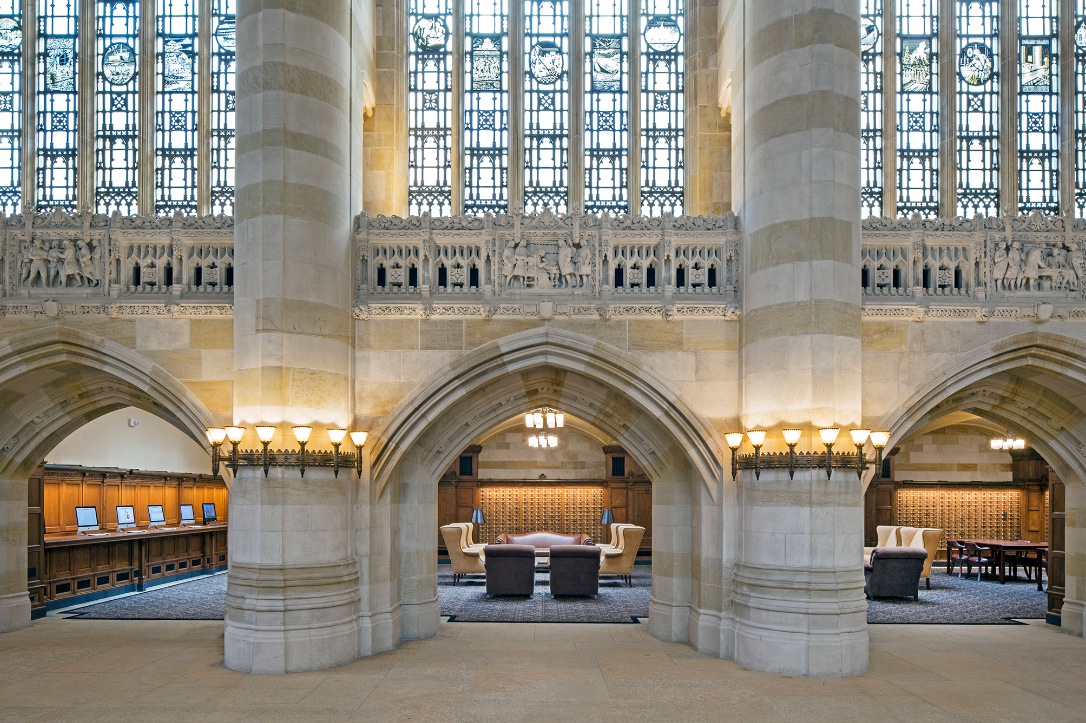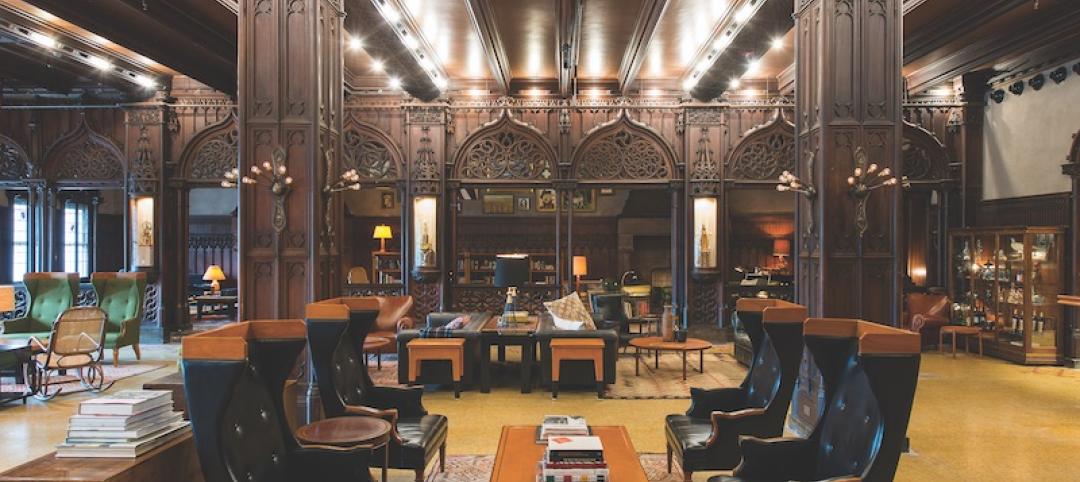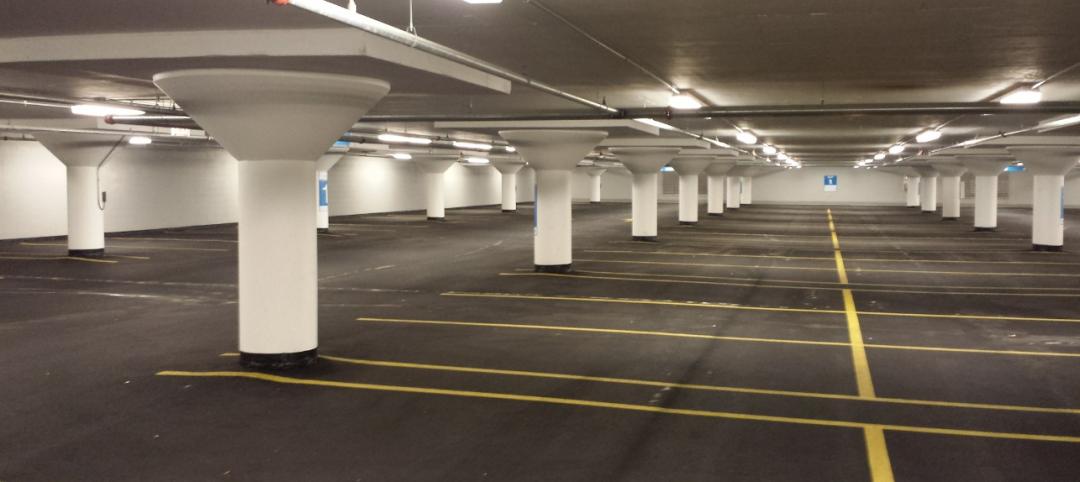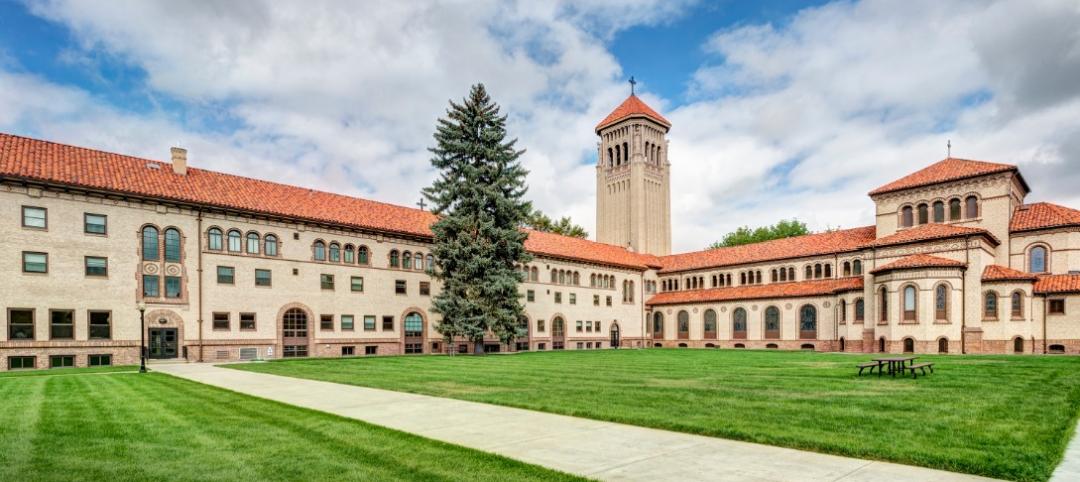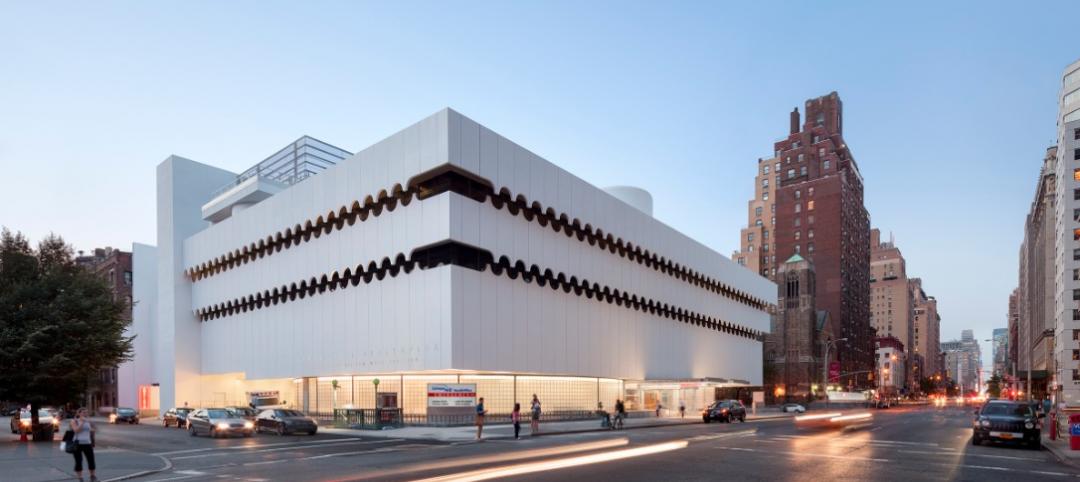When Yale University’s Sterling Library, designed by James Gamble Rogers (Class of 1889), opened in 1931, it was clear that the Collegiate Gothic structure had fulfilled the architect’s vision of a “temple of learning and a cathedral of knowledge.” The quasi-religious experience began right at the main entrance, the 150-foot-long nave, which was embellished with stained glass windows by G. Owen Bonawit, stone carvings by René P. Chambellan, and decorative ironwork by Samuel Yellin.
Four years ago, the university determined that the nave had suffered considerable deterioration and needed to be restored to its original condition. A Building Team led by Turner Construction Company and Helpern Architects was given a strict set of mandates: Make the new nave indistinguishable from the old. Take nothing away from the historic character of the original masonry, metal, finishes, painted surfaces, and stained glass. Improve library operations and update its technology to accommodate Sterling’s physical and digital collections.
SILVER AWARD
Sterling Memorial Library, Yale University New Haven, Conn.
Building Team
Submitting firms: Turner Construction Company (CM); Helpern Architects (architect)
Owner: Yale University
SE: Robert Silman Associates
MEP engineer: AKF Group
Acoustics/AV: Jaffe HoldenGeneral Information
Size: 13,000 sf
Construction cost: $13.5 million
Construction time: June 2013 to August 2014
Delivery method: CM at risk
These tasks were complicated by the further requirement to modernize the nave’s MEP systems—upgrading the lighting to current standards, inserting air-conditioning, concealing the fire alarm system, etc. This had to be accomplished without disturbing the load-bearing stone walls, piers, and columns, which offered no room to incorporate pipes, conduit, and other key infrastructure.
Without any existing cavity wall or chase wall spaces in which to route new mechanical services, the Building Team had to figure out how to jam in critical infrastructure anywhere it could while preserving the existing architectural elements.
Early in the design phase, Turner suggested moving the proposed new mechanical room from its original position in the library stack to unused attic space. The CM hung an aluminum catwalk system from the wood roof framing and created a temporary opening in the stone façade just large enough to fit the air-handling unit. Mechanical piping was installed by opening the roof and craning new risers in from above, the risers running the full length of the shaft.
The last piece of the MEP puzzle had to do with the new fan coil units. Millwork subcontractor CW Keller & Associates created a system of hidden doors within the existing millwork that concealed the fan coil units while maintaining the historic appearance of the card catalog fixtures.
With the MEP matter behind them, the Building Team attacked the remaining problems. Femenella & Associates, working with Helpern Architects, restored the Bonawit stained glass windows. Kugler Ning Lighting Design installed new LED lighting to brighten the interior. The architect reorganized the functions of the three service desks into a single unit, created small meeting spaces in the nave’s north aisle, and reconfigured the circulation desk for easier entry to the stacks.
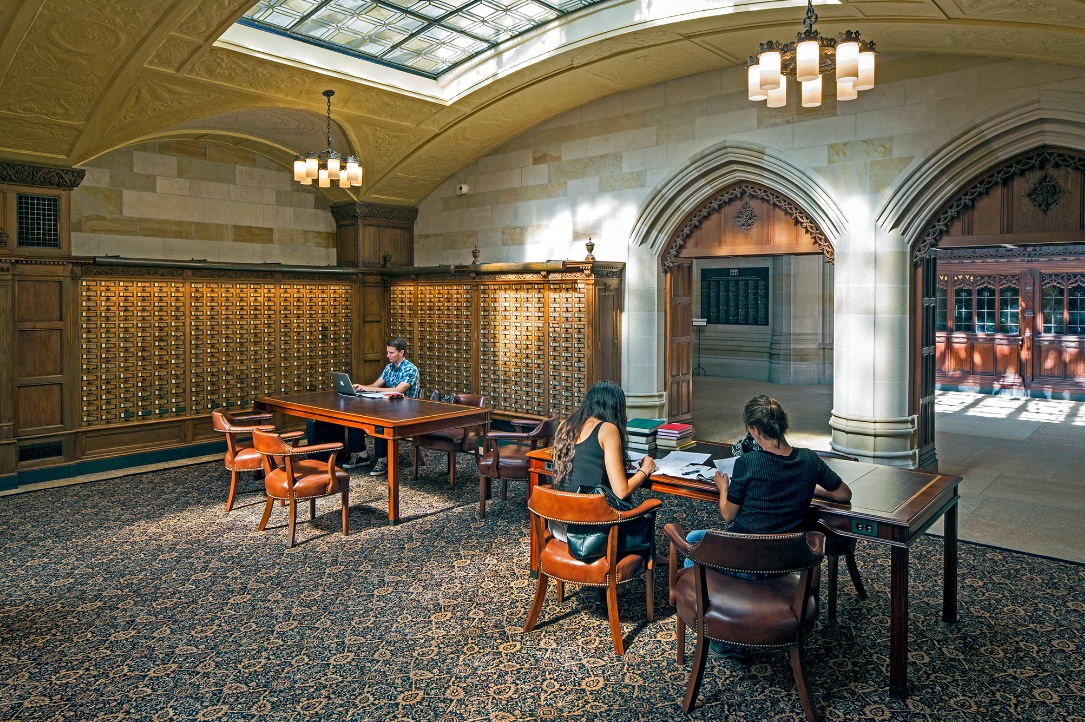 Sterling Memorial Library, originally designed by Yale alumnus James Gamble Rogers, opened in 1931. The Alma Mater mural rises at the end of the 150-foot-long nave (below). Twenty-seven original stained glass windows by G. Owen Bonawit in the nave were restored. Photos: Brian Rose.
Sterling Memorial Library, originally designed by Yale alumnus James Gamble Rogers, opened in 1931. The Alma Mater mural rises at the end of the 150-foot-long nave (below). Twenty-seven original stained glass windows by G. Owen Bonawit in the nave were restored. Photos: Brian Rose.
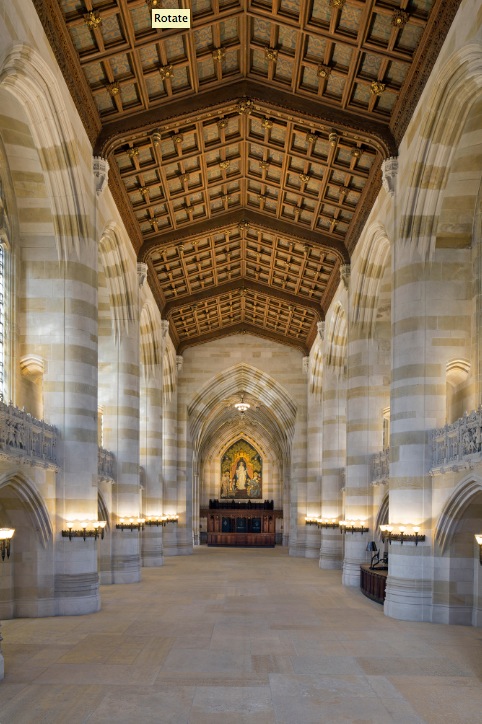
Related Stories
Reconstruction Awards | Nov 11, 2016
Adaptive reuse juices up an abandoned power plant
The power plant was on the National Register of Historic Places and is a Recorded Texas Historic Landmark.
Reconstruction Awards | Nov 11, 2016
Exclusive Chicago club re-emerges as a boutique hotel
Built in 1893 for the World’s Columbian Exposition, the CAA was an exclusive social club founded by leading figures in American sports and commerce.
Reconstruction Awards | Dec 1, 2015
Massive Chicago parking garage gets overdue waterproofing
Millennium Lakeside Garage, the largest underground parking facility in the U.S., hadn’t been waterproofed since the 1970s. The massive project took nearly 2½ years and 33,554 man-hours.
Reconstruction Awards | Nov 30, 2015
Washington Monument restored after 2011 East Coast earthquake
This restoration and repair project, which was completed under budget and eight days early (despite several setbacks), involved re-pointing 2.5 miles of mortar joints, repairing 1,200 linear feet of cracks, and installing 150 sf of Dutchman repairs. Construction took place from November 2011 to May 2014.
Reconstruction Awards | Nov 30, 2015
Denver's 107-year-old seminary campus modernized
The scope of the project included the seminary dorms, library, and chapel, all of which posed their own set of obstacles.
Reconstruction Awards | Nov 24, 2015
Center of I.M. Pei-designed plaza part of Washington redevelopment
The L’Enfant Plaza, a three-story below-grade mall, was renovated to include a new glass atrium pavilion and a 40-foot-long, interactive LED.
Reconstruction Awards | Nov 24, 2015
Manhattan's first freestanding emergency department a result of adaptive reuse
The Lenox Hill Healthplex, a restoration of the Curran O’Toole Building, has glass-block walls and a carefully preserved exterior.
Reconstruction Awards | Nov 19, 2015
Infinite Chicago redevelopment bridges past to present
The renovation of three historic downtown buildings—the Gibbons and Steger Buildings and Pickwick Stables—includes a multi-level concrete walkway connection.
Reconstruction Awards | Nov 18, 2015
Sun Theater serves the youth of St. Louis
Lawrence Group and property owner TLG Beaux Arts raised $11 million to restore the 26,000-sf theater into a modern performance venue.
Reconstruction Awards | Nov 17, 2015
Smithsonian Institution’s Arts and Industries Building again an exposition and museum space
After removing decades’ worth of unfortunate additions to expose 17 historic interior spaces for the National Historic Landmark, the Building Team zoned in on the client’s key concern.


